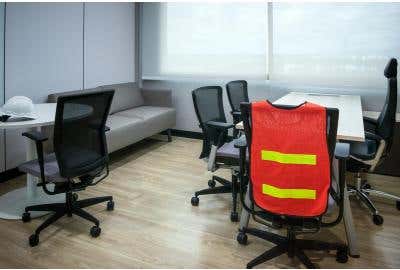August 2017: What’s New in Workplace Safety and Health


Be prepared for the changes with OSHA’s respirable crystalline rule going into effect this September, the new proposed rule for occupational exposure to beryllium and beryllium compounds, and National Preparedness Month!
OSHA's Respirable Crystalline Silica Rule Takes Effect in September
OSHA's final rule to protect workers from exposure to respirable crystalline silica will be enforced for construction industry starting September 23, 2017. General Industry and Maritime have until June 23, 2018 to follow all provisions. Some of the key requirements include lower permissible exposure limit (PEL) for respirable crystalline silica as well as requirement to use engineering controls and provide medical exams to monitor highly exposed workers.
Get ready for this change with these courses:
Respirable Crystalline Silica Awareness in Construction
This course will identify health hazards associated with exposure to silica and respirable crystalline silica dust, some of the common construction tasks that could result in exposure to respirable crystalline, and typical control measures employers may implement to protect workers from exposure to silica and respirable crystalline silica.
Respirable Crystalline Silica in Construction for the Exposed Worker
This course is designed to inform the student of the essential elements of OSHA’s new Respirable Crystalline Silica standard found in 29 CFR 1926.1153. This course is more comprehensive than the Awareness Level course and is largely developed from OSHA’s Respirable Crystalline Silica in construction standard.
OSHA’s 2017 Proposed Rule: Occupational Exposure to Beryllium
OSHA is proposing to revoke the ancillary provisions in the beryllium final rule for the construction and shipyard sectors, while retaining the lower permissible exposure limits. OSHA encourages the “public to participate in this rulemaking by submitting comments and participating in a public hearing if one takes place.” While this proposal does not affect the general industry, OSHA will not enforce the January 2017 construction and shipyard standards without further notice.
September Is National Preparedness Month!
National Preparedness Month, sponsored by Federal Emergency Management Agency, is observed every September in the United States. This year, the overarching theme is “Disasters Don’t Plan Ahead. You Can.” Help your team feel confident in an event of emergency with this course and toolbox talk focused on emergency action and response.
Emergency Response 1 Hour Course
This Emergency Action and Response online safety course will familiarize you with basic knowledge of hazardous materials and emergency response. In addition, this course covers preventative measures that can minimize exposure to health and safety hazards. Response to an emergency is an important element of a safety and health program.
Heat Illness Emergency Response Toolbox Talk
If you see a co-worker that may be displaying some signs and symptoms of Heat Illness, it's very important that you respond quickly to the situation! Do you know what you would do? Learn about some immediate actions you can take to help anyone who is displaying the symptoms of Heat Illness, including Heat Exhaustion and Heat Stroke.
Heat Stress Course
ClickSafety’s Heat Stress course will provide you with the basics of heat stress awareness, symptoms, illnesses, preventative measures and medical surveillance. When finished, you will have a better understanding of OSHA’s safety guidelines so that you are better prepared to recognize and prevent heat stress situations.

